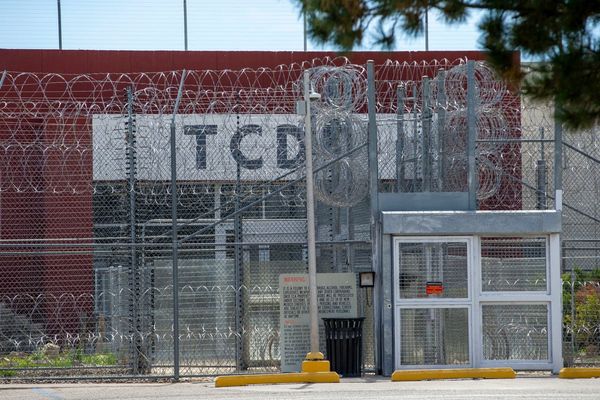
The combination of sunny spring weather and habitat improved by a herd of red Devon cattle has led to a surge in numbers of one of the UK’s rarest butterflies on moorland in the English west country.
As well as increasing in established pockets on Exmoor, the heath fritillary is spreading to new areas, which experts say is highly unusual.
More than 1,000 heath fritillary butterflies, nicknamed the woodman’s follower, have been seen at sites on the National Trust’s Holnicote Estate on Exmoor and nearby land, a significant rise from about 600 at the same time last year.
Three spots have been recolonised and one small site has had a dramatic increase, from just four butterflies in 2024 to 186 this year.
The heath fritillary was almost extinct in Britain in the early 1980s, but targeted conservation work has brought it back from the brink.
The National Trust and the charity Butterfly Conservation have tried to create the ideal conditions for the heath fritillary on Exmoor including using cattle to selectively graze and trample areas for the butterfly, removing bracken and cutting glades at the edge of woodland.
It is not all good news, however. The National Trust is conscious that the exceptionally warm and sunny spring prompted the butterflies to emerge two to three weeks earlier than usual.
Basil Stow, a National Trust area ranger at Holnicote, said: “The early emergence is a mixed blessing. If unsettled weather follows, it could cut short the butterfly’s flight season and disrupt its life cycle. It’s a reminder of how delicately balanced nature is and how climate extremes can threaten even our most carefully managed landscapes.”
Jenny Plackett, the south-west England conservation manager at Butterfly Conservation, said: “It’s wonderful to see such strong numbers of heath fritillary on Exmoor this year. They’ve clearly benefited from the warm, sunny spring, emerging as adults weeks ahead of schedule.
“We’ve recorded butterflies at several new sites, including areas where they haven’t been seen since the 1990s. The heath fritillary is generally very sedentary, so this kind of expansion is highly unusual and suggests that recent habitat management is working.”
The heath fritillary thrives in moorland and coppiced woodland – hence its nickname – where its caterpillars feed on common cow-wheat. It is restricted to four core landscapes: Exmoor, the Tamar Valley in south-west England, the Blean woods in Kent and woods in south Essex.







